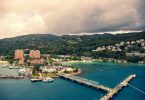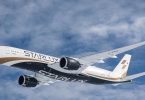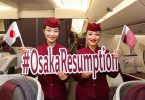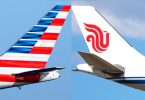MANILA, Philippines – Cebu Pacific plans to hire about 700 more personnel through 2014 while Philippine Airlines implements a freeze-hiring policy and continues to restructure this year, both airline managements reported to the Securities and Exchange Commission ahead of their annual meetings.
“(Cebu Pacific) anticipates having approximately 3,995 employees by the end of 2014” as against the 3,297 it already had as of end-2013, the budget airline said.
Cebu Pacific squeezed P512 million in profit last year, against the nearly P3.6 billion net income it enjoyed in 2012, after suffering over P2 billion in net foreign exchange losses.
The Gokongwei airline attributed the sharp drop in profitability to the peso depreciating against the US dollar-denominated debts the airline had incurred in connection with its aircraft acquisition.
PAL, meanwhile, reported in its 2013 annual report that it “does not have any plan of hiring additional employees within the ensuing 12 months” on account of the airline continuing to post mounting losses.
Despite declining fuel prices, the biggest operating expense, PAL Holdings was buffeted by over a P9-billion loss for the last nine months of 2013, on top of the P10.6 billion the airline holding company already lost in the last two fiscal years.
On the positive side, PAL managed to slash P1.1 billion, a 36 percent reduction, in general and administrative expenses last year with new president Ramon S. Ang cutting down on consultancy, legal and professional services.
Still, the savings had been swamped by the P5 billion in impairment loss that PAL has had to incur for the nine Bombardier DHCs and the four Boeing 747-400s that had either been grounded or identified for retirement this year.
Despite re-opening routes to London, Abu Dhabi, Riyadh, Damman, Brisbane and Guangzhou, PAL reported lower aircraft and traffic servicing expenses, mainly due to the airline’s operating fewer roundtrip flights, 17,372 for the nine-month period of 2013 compared to the 26,954 for the whole fiscal year before, due to the cutdown on non-profitable domestic and regional routes.
Despite rationalizing its routes, PAL recorded a passenger load factor of 69.93 percent as against Cebu Pacific’s 82 percent, and significantly still way below the worldwide industry load factor of 79.5 percent.
And notwithstanding the promise of a turnaround with a new management and a peace deal with its militant labor union, PAL’s key financial ratios have taken a turn for the worse as the bitter medicine of route and fleet restructuring took effect.
The debt-to-equity ratio, total liabilities divided by shareholders’ equity, has ballooned to 19.33 by end-2013 from 4.21 only in March 2013, a definitive indicator that the creditors instead of the Lucio Tan and San Miguel groups are financing the airline more and more.
PAL’s interest rate coverage ratio, a measure on how easily a company can pay interest on outstanding debt, has fallen to negative 8.8 from negative 1.73 within the same span of nine months.
Its solvency ratio, which measures cash flow to meet debt and other obligations and therefore the capacity to stay afloat, has turned from positive 0.05 to negative 0.12, also within the same three quarters.
To protect themselves, a syndicate of banks had taken as collateral a number of PAL planes, their engines and even future collections from passenger sales in the United States through designated credit card companies.
A number of real estate properties controlled by PAL chairman Lucio Tan had also been pledged.
The loans with syndicate banks, facilitated before the 2012 partnership with San Miguel, include such covenants as a specified debt-to-earnings ratio and “the maintenance of a certain ownership percentage by a specified stockholder.”
That latter provision is probably why the rumored complete exit from the airline by the taipan has until now failed to materialize.
(eTN): Philippine Airlines freezes hiring while Cebu Pacific hires 700 | re-post license | post content





















